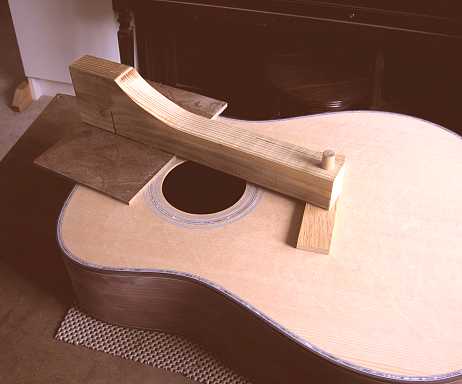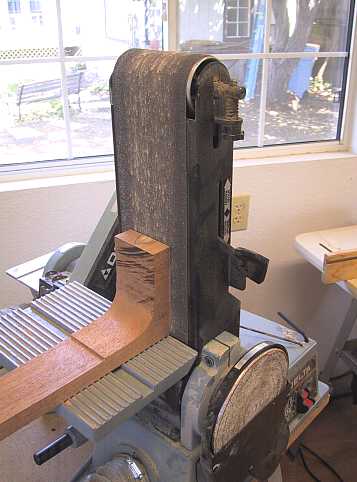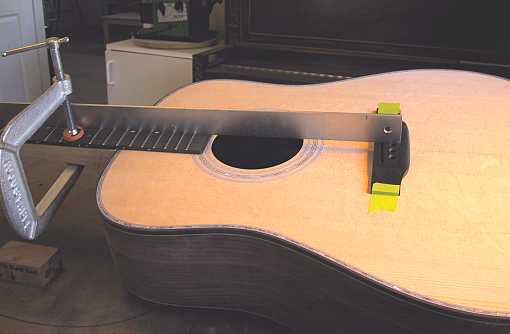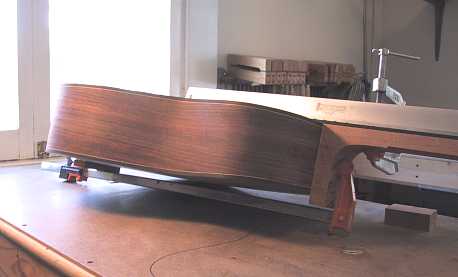July 21st, 2004. . . .Well, after a day or so recuperating from my trip, and dealing with a DSL modem that went on the fritz, I got back to Pat's guitar! The first thing I did was to make the jig you see below, to sand flat the 25' radius dome on the top above the soundhole. That way, the fingerboard extension will lie flat upon the top. I decided to make a jig like the one posted on the MIMForum by Terence Kennedy, in which the sanding plate is the thickness of the fingerboard with frets, and the pivot board is the thickness of the bridge.
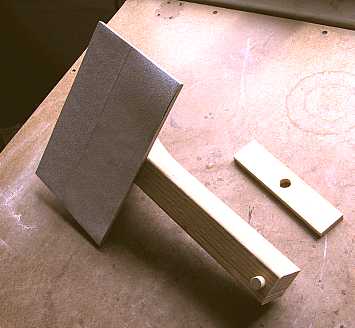
It worked well. Later, when I checked out the neck angle and clamped the fingerboard on top of the neck, there was no problem in how the fingerboard extension lay on the top. It transitioned very smoothly from the neck blank surface to the surface of the top.
